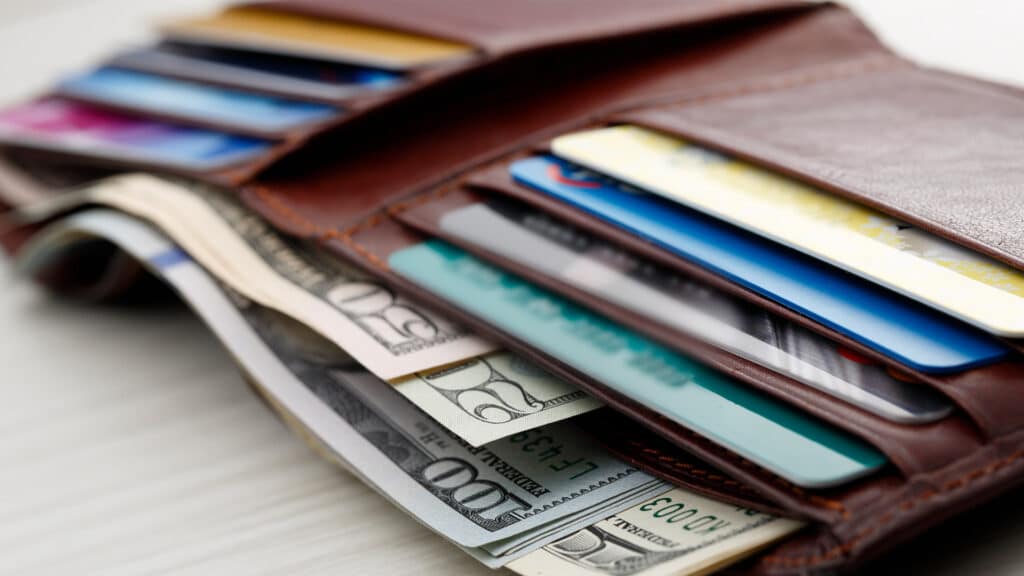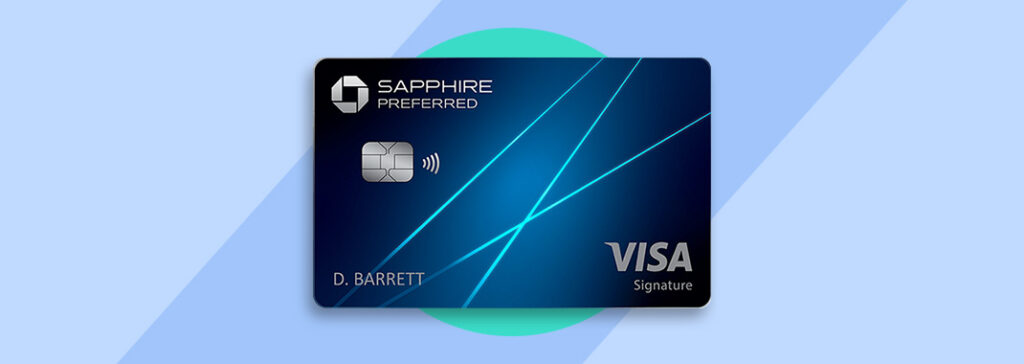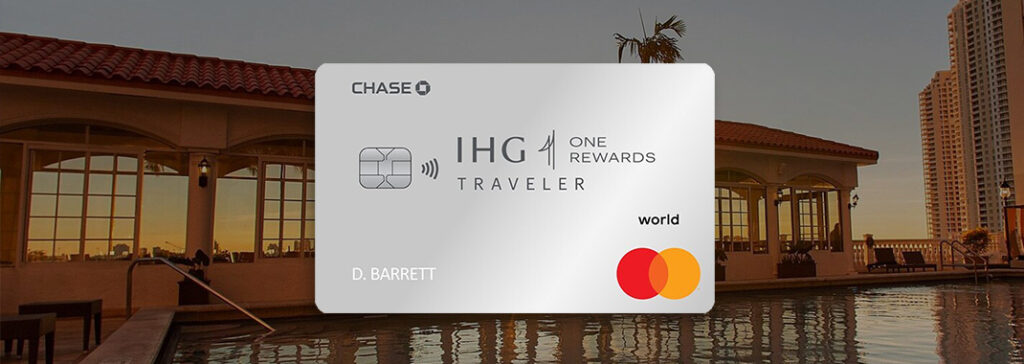Most products on this page are from partners who may compensate us. This may influence which products we write about and where and how they appear on the page. However, opinions expressed here are the author's alone, not those of any bank, credit card issuer, airline or hotel chain. This page may include information about American Express products currently unavailable on Slickdeals. American Express is not a partner of Slickdeals.
If you want your credit card spending to help you fund trips on your bucket list, then you will want a travel credit card. How do travel credit cards work and how can one help you achieve your vacation goals? We’ve laid it all out for you here.
How Do Travel Rewards Credit Cards Work?
Travel rewards credit cards are a good fit for those who travel a lot for work or pleasure, or for those wanting to spread their wanderlust wings. There are two main types of travel credit cards to consider when building up your wallet:
- General-purpose credit cards: These travel cards offer the most flexible options for earning and redeeming points. General travel cards are usually packed with travel perks and might have a preference for travel partners, but they aren’t exclusive.
- Airline and hotel co-branded cards: Co-branded cards, on the other hand, are usually exclusive to the airline or hotel. You might still be able to transfer earned points to another travel partner at a 1:1 ratio, but expect to earn the most points when spending it at a specific hotel or airline.
Travel Cards Versus Cash-Back Cards
Both travel cards and cash-back cards have their perks, and one is not notably more beneficial than the other unless you plan to travel. If your main purpose for earning credit card points is to travel extravagantly for less, then a travel card is the way to go.
With cash-back cards, you earn a percentage back on all of your purchases. Many times, a specific purchase, such as buying gas, will earn you more back than the new headsets you bought on Amazon. Cash-back cards are generally easier to keep track of and you can redeem your points as deposits into your bank account.
What Are Points and Miles Worth?
There is no set answer to how much a point or mile is worth, as all cards set their points at a different evaluation. It is key to know the baseline point valuation for your card so that you can set that as a minimum worth. This will enable you to get the most bang for your travel points.
Here’s what we mean: Say your travel card points are worth 1.8 cents per mile/point. If you have 50,000 points to redeem, that is $900 at a 1.8 cent valuation. If you wanted to use your points to book a flight, you would then find out how many miles/points the flight is, versus how much it would cost you in cash.
For example, if the flight you wanted cost 50,000 points or $500, this would be a poor deal. If you redeem your points towards this flight, your points would only be worth one cent each, and essentially, you would have lost out on $400 worth of possible travel. No bueno!

How I Earned More Than 300,000 Amex and Chase Ultimate Reward Points in 6 Months
Similarly, if you find a flight that normally costs $1,200 for 50,000 points, then this is a great deal, since your points are being redeemed at 2.4 cents per point.
Travel Credit Cards 101 How To Choose a Travel Credit Card
Travel credit cards can be YMMV — “your mileage may vary” — which is true both figuratively and literally. Don’t sign up for a reward card just because a travel blogger is benefiting from it. Your spending habits and lifestyle might do better with a different card. Here’s what to look for:
-
1
Think about what Rewards you will actually use
Think about which airlines and hotels you love the most. Now think about the ones you dislike. You want a card that partners with your favorite airlines and hotels so that you can maximize where you spend your points. You don’t want to earn thousands of points toward vacations you don’t want to take.
-
2
Look for a high earning rate
You can learn the point valuation for each card with a quick web search. Look at the card’s travel partners and the transfer ratio too.
-
3
Consider a Card with a Sign-up bonus
A good sign-up bonus can kick-start your vacation plans, but make sure you can afford the spending requirements.
-
4
Check for Travel credits
Some travel cards offer a yearly travel credit or rebate, which is a nice incentive if you are paying an annual fee.
-
5
Look for Perks & Travel benefits
Can this card save you money alongside earning you points? Take a look at the travel perks, such as insurance or free checked bags, to weigh how much a card will help you.
-
6
Consider how points are redeemed
Take a look at a card’s reward program before signing up to ensure it is right for you. Ideally, your points should easy to redeem toward travel with companies you love.
-
7
Look out for an Annual fee
An annual fee is not an automatic negative. You just need to weigh the fee against the perks and benefits.
Is an Annual Fee Worth It?
Annual fees used to be the devil of credit card talk, but now, many cards with fees pack on so many perks, the fee is worth it. You cannot just take a card’s perks at face value, though. If you don’t plan on using these bonuses each year, then the card’s annual fee might not be worth it for you.
Read one Slickdeal writer’s experience with annual fee cards. They realized that a travel card with an annual fee was giving them over $1,000 in added value over a no-fee cash-back card.
How To Redeem Travel Credit Card Points
Each card issuer is set up differently, but most will allow you to redeem your points/miles through their own travel booking platform. If the card has travel partners, you can also transfer your points to a loyalty program and redeem them through that company’s site instead.
Once, I was able to redeem my credit card points for 3X the value just by transferring them over to my hotel loyalty program. The hotel’s website offered a special all-resort package for the points that would have cost much more through the credit card issuer’s travel portal.
How To Get the Most Out of Your Travel Rewards Credit Card
If you want to be one of those credit card success stories where the user pays for their whole trip to Tahiti with points, you need to use your travel rewards credit card right. Here’s how the pro card users get the most of their travel rewards:
- You need to earn the sign-up bonus. The sign-up bonus is designed to reel you in and get you spending. However, if you plan wisely, you can use the huge bonus to your advantage. Keep tabs on how close you are to the bonus. You can always contact your card’s customer service line to confirm how much you spent towards the sign-up bonus.
- Pay your monthly statement. Staying on top of your monthly payments is essential if you want to increase your credit. It is also important not to carry debt on these cards because the interest rate paid will negate any travel points earned.
- Understand the perks and benefits. Make sure you are using your card to your full advantage. Use yearly credit and rebate offers, airport lounge access and companion passes to ensure your card is saving you money each year.
- Put all of your spending on the card. Simply put, you aren’t going to rack up the travel points if you forget to use it on big and small purchases alike. Load your card into your Amazon or Uber Eats account or set it up to automatically pay your phone bill. Every dollar spent will get you closer to your dream vacation.
- Only use your points towards travel redemptions. When you are short on cash, it can be tempting to convert your credit card rewards to a bank deposit. Resist the urge, since travel rewards are usually worth more when they are spent towards travel.
- Earn bonus point opportunities. Keep an eye on your card’s bonus offers and shopping portal to earn even more points. You can score additional points on online shopping you were already going to do just by going through the card issuer’s link.











